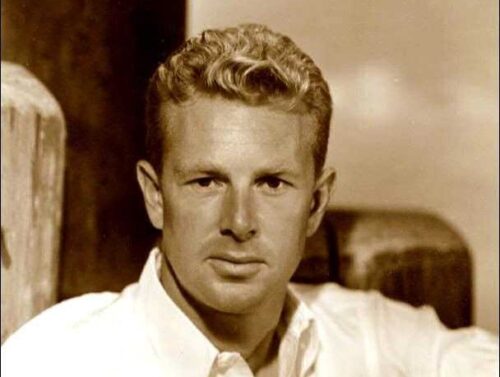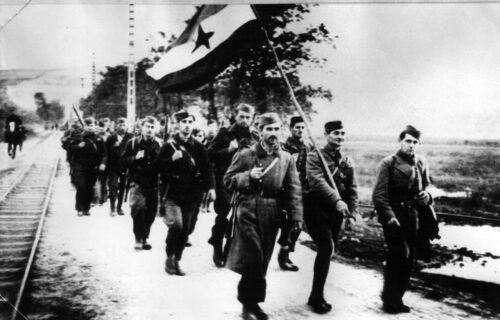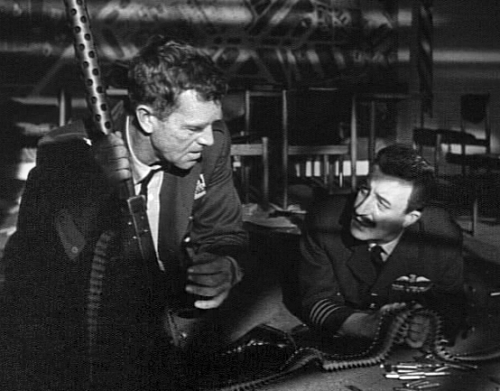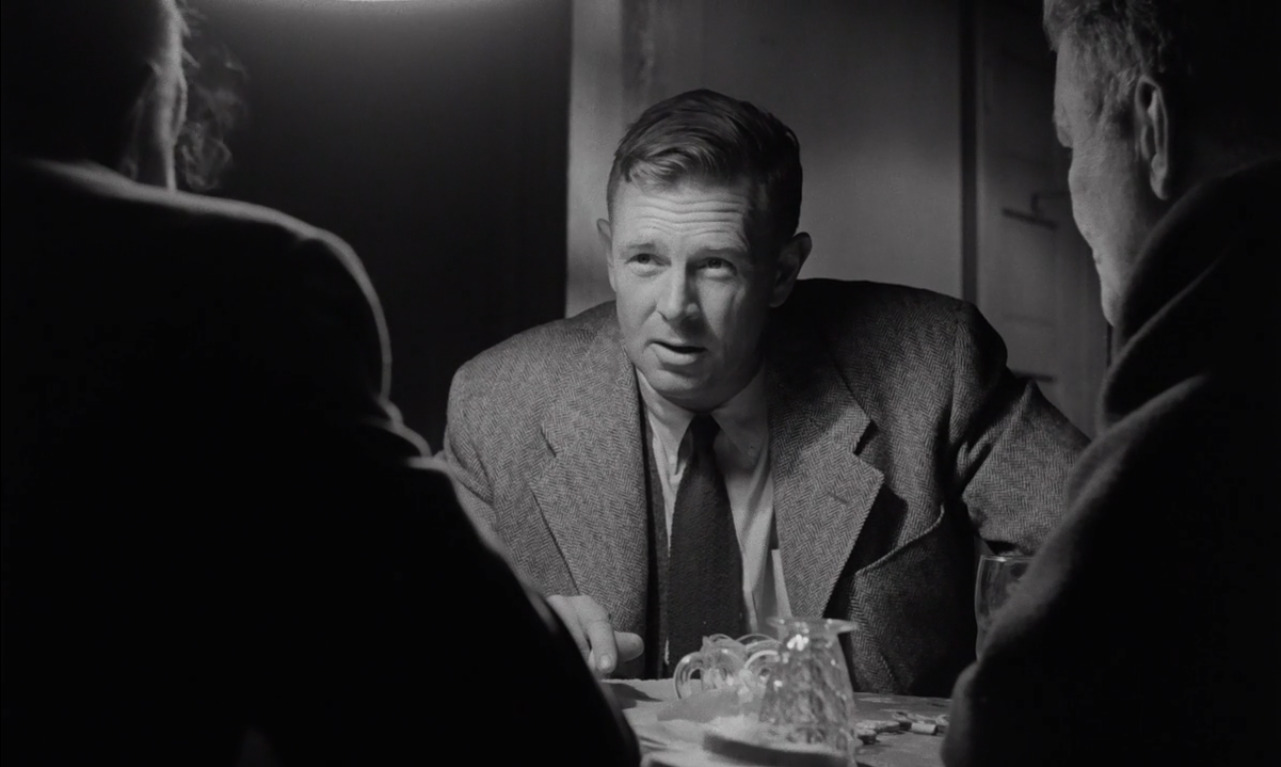Sterling Hayden in “The Killing” (1956) — trailer screenshot (United Artists).
Sterling Walter Hayden, born on March 26, 1916, was a man of many talents. He was an accomplished American actor, author, sailor, soldier and spy. His entertainment career spanned over four decades, during which he succeeded both as a leading man and as a supporting actor.
Early Life and Career
Hayden was born in Upper Montclair, New Jersey, to George and Frances Walter, who named him Sterling Relyea Walter. After his father’s death, he was adopted at age 9 by James Hayden and renamed Sterling Walter Hayden. As a child, he lived in coastal towns of New England. Hayden dropped out of high school at the age of 16 and took a job as a mate on a schooner. His first voyage was to Newport Beach, California, from New London, Connecticut. Later, he was a fisherman on the Grand Banks of Newfoundland, ran a charter yacht, and served as a fireman on 11 trips to Cuba aboard a steamer. He skippered a trading schooner in the Caribbean after earning his master’s license, and in 1937 he served as mate on a world cruise of the brigantine Yankee. After serving as a sailor and fireman on larger vessels and sailing around the world several times, he was awarded his first command at age 22, skippering the square rigger Florence C. Robinson 7,700 miles from Gloucester, Massachusetts, to Tahiti in 1938.
Early Hollywood Career
Hayden’s life changed dramatically in 1938, when he participated in the Gloucester, Massachusetts, Fishermen’s Race and his photo caught the attention of a magazine editor. The magazine put him on the cover and soon Paramount Pictures contacted him for a screen test. Hayden recalled:

“I had no clue what I was doing, I was just scared and clueless. But somehow, Paramount offered me a seven-year contract with $250 a week, which was a fortune. I took my dear old mother and bought a car, and we drove to California… I was so confused then I didn’t question it. I thought, ‘This is crazy, but, hey, it’s nice.’ I only had one goal in mind: to save $5,000. I knew where there was a schooner, and then I’d get out of here.”
Hayden arrived at Paramount in May 1940. His debut film, Virginia (1941), directed by Edward H. Griffith, starred Madeleine Carroll, who became his wife. He worked with Griffith and Carroll again in Bahama Passage (1941). In December 1941, he announced that he had left Hollywood saying “I’m no actor! I’m a sailor.”
Service in the OSS
Hayden felt a strong desire to serve his country during World War II. He joined the Army but was discharged after he broke his ankle during training. He subsequently joined the Marines. Hayden joined the Office of Strategic Services (OSS) after serving in the Marines. He felt he could do more to serve his country, so he wrote directly to William J. “Wild Bill” Donovan, offering the use of his expert sailing skills. He served under the assumed name. John Hamilton
After selection to and graduation from Marine Corps OCS, he was commissioned a second lieutenant in the Reserve and shortly was transferred for duty as an undercover agent with Donovan’s Office of the Coordinator of Information. He remained there after it became the OSS. He ended up serving the OSS with distinction in the European theater.

Hayden was involved in supplying Yugoslav partisans with support. The OSS set up a secret shipping operation in Italy that allowed Sterling and his crew to bring weapons and supplies to agents behind enemy-occupied territories in Eastern Europe. His mastery of sailing was put to good use by the newly created OSS.
War Hero
One of the unsung heroes of the undercover war, he was awarded the Silver Star for displaying “great courage” in the Mediterranean Theater. Hayden was involved in supplying Yugoslav partisans with support. His service in the OSS was a testament to his bravery and commitment.
For his service, Hayden also received a Bronze Arrowhead device for parachuting behind enemy lines, and a commendation from Yugoslavia’s Josip Broz Tito. He left active duty on December 24, 1945. Tito awarded him the Order of Merit
Hollywood Stardom
Hayden’s success in Hollywood began in the 1950s, where he specialized in westerns and film noir. He starred in films such as John Huston’s The Asphalt Jungle (1950), Nicholas Ray’s Johnny Guitar (1954), and Stanley Kubrick’s The Killing (1956). He became noted for supporting roles in the 1960s, perhaps most memorably as General Jack D. Ripper in Kubrick’s Dr. Strangelove or: How I Learned to Stop Worrying and Love the Bomb (1964). Hayden’s success continued into the New Hollywood era, with roles such as Irish American policeman Captain McCluskey in Francis Ford Coppola’s The Godfather (1972), alcoholic novelist Roger Wade in Robert Altman’s The Long Goodbye (1973), and elderly peasant Leo Dalcò in Bernardo Bertolucci’s 1900 (1976).

Author of Two Books
Hayden turned to writing later in his life and authored two books. His autobiography, Wanderer, published in 1963, is a candid and sometimes painfully revealing confession of a man who scrutinized his every self-defeat and self-betrayal in the unblinking light of conscience. The book details his decision to quit Hollywood at the peak of his earning power, walk out of a shattered marriage, defy the courts, and set sail with his four children in the schooner Wanderer, bound for the South Seas.
His second book, Voyage, is a novel about the sea. Both books reflect Hayden’s deep love for the sea and sailing, a passion that was evident throughout his life. His writings have been appreciated by many for their honesty and the unique perspective they offer on his life and experiences.
Legacy
Sterling Hayden passed away on May 23, 1986. His life was a testament to his adventurous spirit, his talent as an actor, and service to his country. His legacy continues to inspire and captivate audiences and admirers around the world. He was a true Renaissance man.
Resources
Office of Strategic Services Society
OSSSociety.org
USASOC OSS Website (Official US Army Website)
www.soc.mil/OSS/index.html
International Spy Museum
SpyMuseum.org
Central Intelligence Agency
CIA.gov
*The views and opinions expressed on this website are solely those of the original authors and contributors. These views and opinions do not necessarily represent those of Spotter Up Magazine, the administrative staff, and/or any/all contributors to this site.
